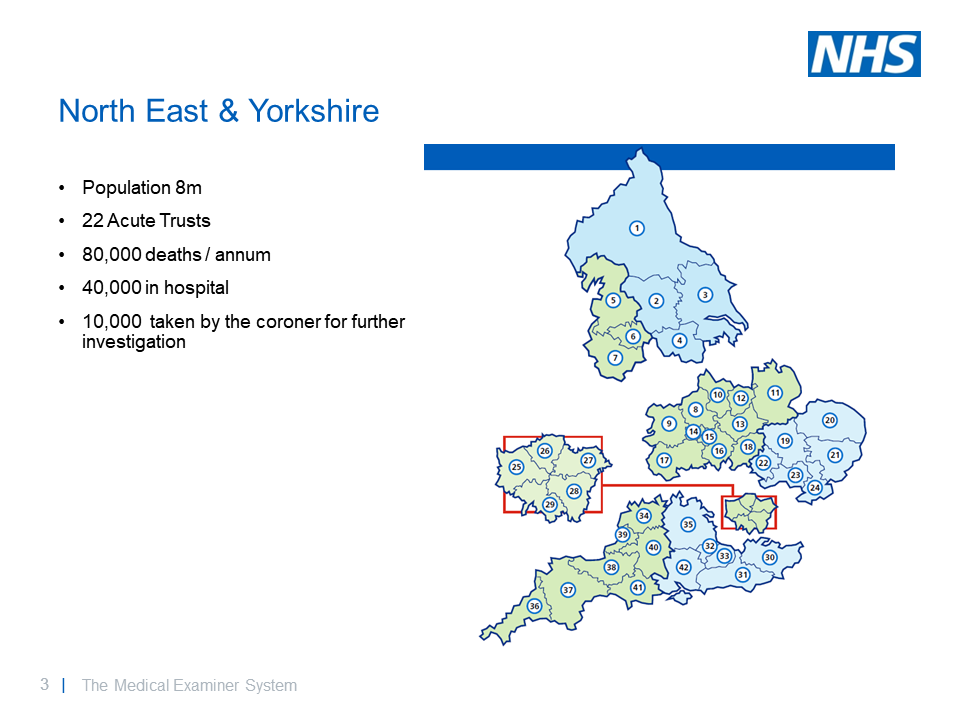بِسۡمِ اللهِ الرَّحۡمٰنِ الرَّحِيۡمِ
Introduction
The forthcoming implementation of a new statutory medical examiner system in England and Wales, scheduled for April 2024, aims to introduce independent scrutiny of deaths and enhance support for the bereaved. A pivotal aspect of this transition involves the introduction of a revised medical certificate of cause of death, which can be completed by any attending doctor.

Legislative Framework
The cornerstone legislation supporting the statutory Medical Examiners System traces back to the Coroners and Justice Act of 2009.
Commencement and Progress
The rollout of medical examiners began in 2019 in England and Wales, with the appointment of the National Medical Examiner and the establishment of national and regional teams. However, ensuring comprehensive implementation necessitates collaborative efforts among healthcare providers to ensure preparedness across various regions.
Purpose of the New Medical Examiner System
The introduction of the medical examiner system aims to:
- Provide enhanced public safeguards through independent scrutiny of all non-coronial deaths.
- Facilitate the appropriate direction of deaths to the coroner.
- Improve services for the bereaved, offering them a platform to voice concerns to a doctor not involved in the deceased's care.
- Enhance the quality of death certification and mortality data.
Legal Basis for Scrutiny
To bolster the legal framework for medical examiner scrutiny of patient records, the National Medical Examiner’s team sought approval from the Confidentiality Advisory Group in 2021, enabling the sharing of deceased patients' records among healthcare organizations for medical examiner review before statutory implementation.
Role of the New Medical Examiner
Medical examiners, as senior doctors, conduct independent scrutiny of causes of death within five days before death registration. Operating outside their regular clinical duties, they undergo training encompassing legal and clinical aspects of death certification processes. Additionally:
- They serve as points of contact for bereaved individuals seeking clarification or expressing concerns.
- Supported by medical examiner officers, they proportionately review medical records and facilitate communication with the bereaved.
- When necessary, they conduct external examinations of deceased bodies or delegate the task.
- They engage with relevant stakeholders to discuss the cause of death, ensuring accuracy and transparency.
Location of Medical Examiner Offices
The national medical examiner system, a component of the Department of Health and Social Care’s Death Certification Reform Programme, establishes offices primarily within acute trusts across England. These offices, staffed by medical examiners and officers, undertake various functions, including finalizing cause of death determinations, addressing queries and concerns from bereaved individuals, providing medical advice to local coroners, and contributing to local mortality reviews and clinical governance processes.
Contact Information for the Medical Examiner Office in Huddersfield
The Medical Examiner Office for Huddersfield is situated at Calderdale And Huddersfield NHS Foundation Trust. Key personnel can be contacted via provided email addresses and phone numbers.
medical.examiner@cht.nhs.uk; cah-tr.medical.examiner@nhs.net
- 01484 356929 – medical examiner officer team leader
- 01484 34 3473 – service manager
- 01484 35 6930 – medical Examiner officer
- 01484 35 6931 – medical examiner officer
Issuance of the New MCCD
- Attending practitioners are legally obliged to furnish information and the Medical Certificate of Cause of Death to the medical examiner for scrutiny.
- The certifying doctor completes the MCCD, which must undergo review by the medical examiner before submission to the registrar.
- Medical records of deceased patients are shared among healthcare providers for scrutiny by medical examiners.
- The medical examiner must refer deaths to the relevant senior coroner as necessary.
Structure of the New MCCD
The MCCD consists of two parts:
- Part I: Sequential causes, conditions, or events leading directly to death, necessitating an acceptable cause of death.
- Part II: Significant contributing conditions not directly linked to the primary cause of death, which may require referral to the coroner.
Circumstances for MCCD Issuance
In exceptional circumstances where attending practitioners are unavailable, medical examiners may issue the MCCD, subject to coroner review.
Referral to the Coroner
The referral of relevant deaths to the coroner persists, with registrars bearing the legal responsibility to report certain deaths. Registrars are not obligated to discuss causes of death with medical examiners under the current non-statutory scheme.
Registration of Deaths
- Deaths are not registered until the registrar receives notification of the cause of death from the medical examiner or coroner, commencing a statutory 5-day registration period.
- Registrars are not mandated to refer deaths to the coroner.
- Medical examiners possess the authority to release bodies for burial or cremation.
Dr. A. Hussain, Feb. 2024
